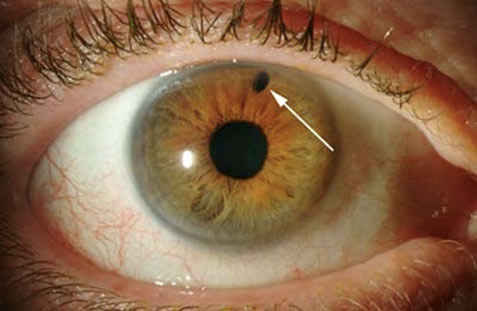Treatment of glaucoma

آنچه خواهید خواند...
What is Glaucoma?
Glaucoma, also known as the “black water disease,” refers to an increase in intraocular pressure that can lead to damage to the optic nerve and, ultimately, permanent blindness. It’s important to note that some forms of glaucoma may progress to advanced stages without any noticeable symptoms. Individuals often become aware of the disease only when a significant portion of their optic nerve fibers has been lost, and their vision has irreversibly declined. Therefore, early diagnosis of glaucoma and timely treatment are the key factors in preventing disease progression and reducing vision loss.
In the eye, there is a constant secretion of a clear fluid known as aqueous humor, which exits from a location called the angle (the area where the cornea and iris meet). If an obstruction or impediment prevents this fluid from easily exiting the eye, the intraocular pressure increases.
Causes of glaucoma
The cause of glaucoma is typically due to an imbalance in the production and outflow of the aqueous humor, the clear fluid inside the eye. Just as basketballs or footballs need internal air pressure to maintain their shape, the eye also requires pressure from the fluid inside it to maintain its spherical form and enable vision. However, glaucoma occurs when the internal eye structures cannot control intraocular pressure effectively, and the eye pressure becomes dangerously high. Unlike balls that can relieve pressure by increasing elasticity and releasing air through a hole, the eye cannot reduce increased pressure this way. Instead, the elevated pressure remains, exerting pressure on the optic nerve and causing permanent damage and vision loss.
Risk factors for chronic or open-angle glaucoma
Age
The risk of developing this disease increases with age, especially after the age of 40, and with every additional decade, the risk also rises.
Special medical issues
Diabetes, high myopia (severe nearsightedness), a history of previous eye surgery, and long-term and high-dose use of steroid inhalers are factors that increase the risk of developing open-angle glaucoma. Other factors that can increase the likelihood of developing glaucoma include migraine headaches, high blood pressure, narrow blood vessels (vascular spasm), and cardiovascular diseases.
Structural eye disorders
Disorders that affect the internal structures of the eye can lead to glaucoma.
race
Chronic glaucoma is three to four times more common in people of African-American descent than in those with lighter skin. Additionally, individuals of African descent are more susceptible to the severe form of the disease, which affects younger individuals.
Family history
The risk of developing this disease increases three to fourfold if one or more parents or siblings are affected by this condition.
Glaucoma symptoms
Most people with glaucoma do not experience any symptoms. You may remain unaware of the disease until the advanced stages when significant vision loss has occurred. About half of individuals with glaucoma are unaware of their condition, and by the time they realize their vision loss, severe eye damage has often occurred. Occasionally, a person may experience an acute (sudden and short-term) glaucoma attack. In such cases, the eye becomes red and very painful, and symptoms like nausea, vomiting, and blurred vision may also occur. In general, it is recommended to have a comprehensive eye examination at the age of 39. After that, it’s advisable to have an eye examination every 2 to 4 years. After the age of 64, it is recommended to have an eye examination every 1 to 2 years.
Treatment for glaucoma
Glaucoma can be treated with various methods, including eye drops, oral medications, laser surgery, traditional eye surgery, or a combination of these approaches. The goal of treatment is to lower intraocular pressure, thereby preventing further damage to the optic nerve and loss of vision. The specific treatment approach will be determined by an ophthalmologist based on the type of glaucoma, its severity, and the patient’s individual circumstances. Regular monitoring and compliance with treatment are essential for managing glaucoma effectively and preserving vision.
When is glaucoma surgery necessary?
Depending on the type of glaucoma, different treatment plans may be considered. Non-surgical options include eye drops and oral medications.
In many cases, glaucoma can be managed with one or two eye drops. However, some individuals may require surgery to lower intraocular pressure by enhancing the outflow of fluid, especially when more conservative measures aren’t sufficient to reduce the pressure to a safe level.
Sometimes, surgery reduces the need for medications (eye drops). Nevertheless, eye drops may still be necessary after surgery. Surgery is typically considered when glaucoma is advanced, has caused damage to the optic nerve, and eye pressure remains high.
